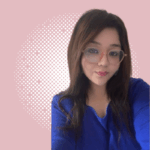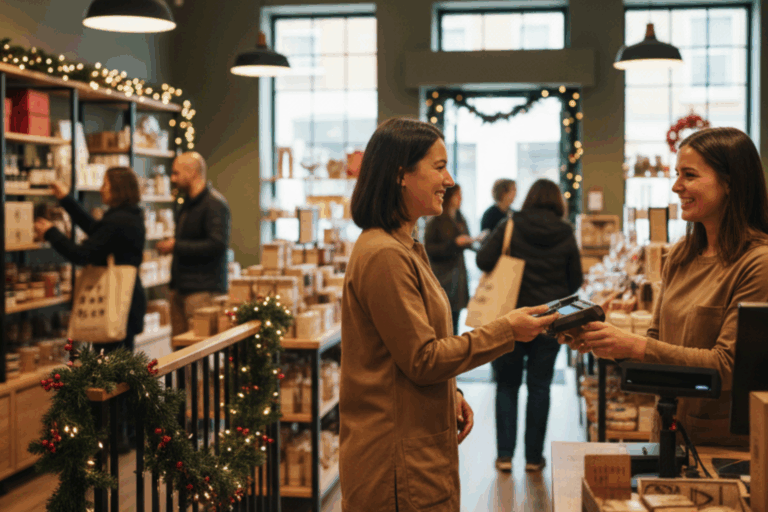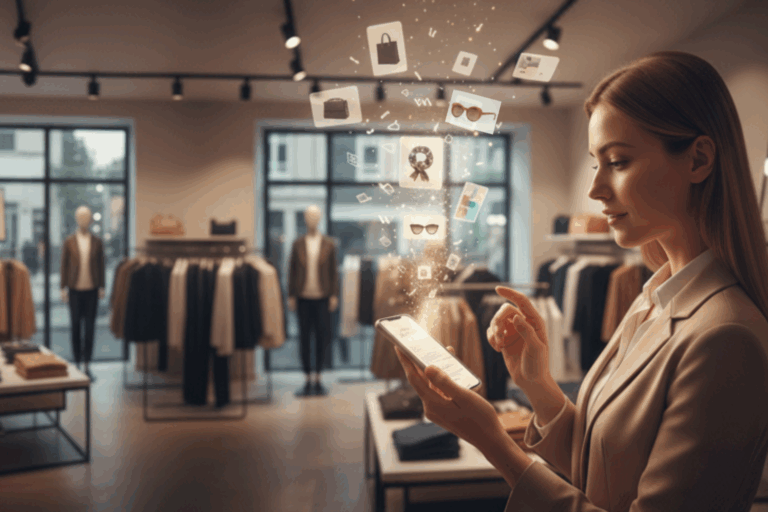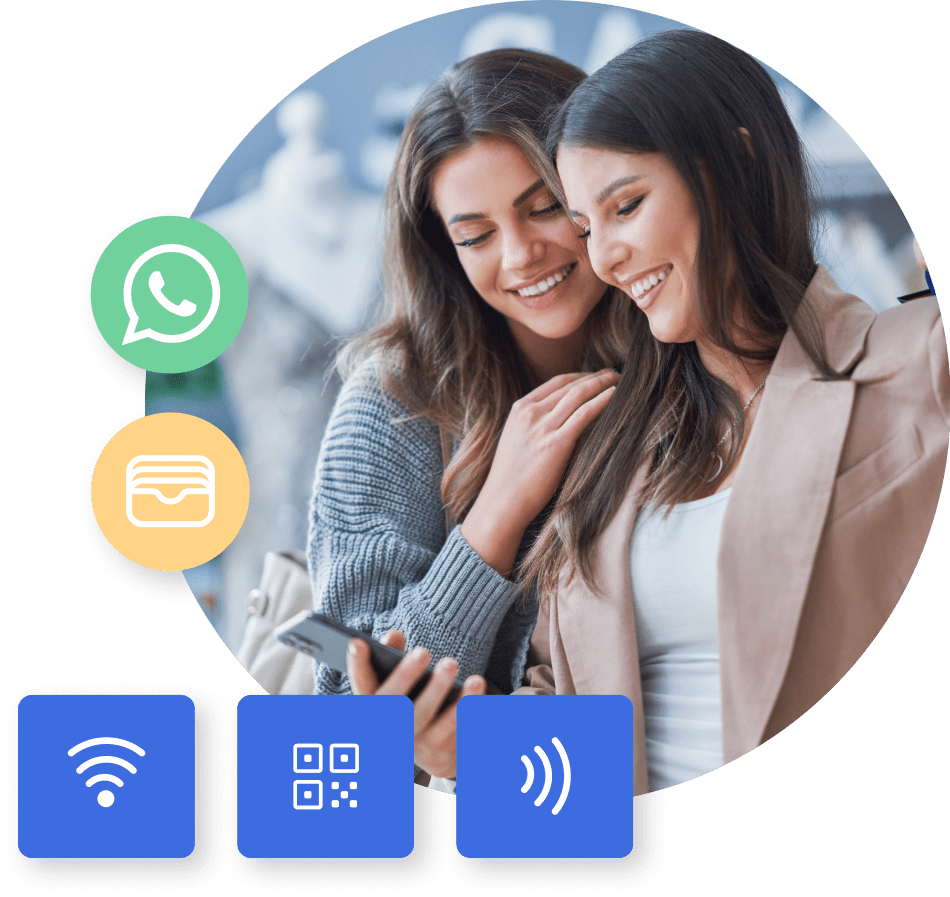You find the perfect pair of shoes online, but when you visit the store to try them on, the experience falls flat. The styles you liked aren’t available, and the sales associate can’t assist with your online selections. Frustrated, you leave empty-handed.
Now, imagine a different scenario: The store has your chosen styles ready, the associate greets you by name, and the app offers a personalised discount. This is the power of going “phygital,” where physical and digital shopping seamlessly merge.
Today’s customers expect this hybrid experience. In fact, 86% of buyers are willing to pay more for a great customer experience. But there’s a myth that going phygital requires a hefty budget and complex tech.
The reality?
You can create a seamless phygital experience without breaking the bank.
This blog will explore practical strategies to help your brand transition to phygital without ahuge overhead costs. We’ll debunk myths, share success stories, and provide actionable tips for a smooth transition.
What Does Going Phygital Mean?
The term “phygital” combines the best of both physical and digital worlds to create a seamless shopping experience. This strategy allows brands to engage with customers at multiple touchpoints, offering convenience, personalisation, and a unified brand experience.
Understanding Phygital Retail
Going phygital is about integrating digital experiences with the physical environment, creating an immersive experience for customers. Imagine entering a store and accessing detailed product information via QR codes or using an app to reserve items for in-store pickup. These are examples of how brands merge the two worlds to cater to modern consumers.
A customer’s journey will differ between a traditional shopping experience and a phygital one. In a traditional setting, a customer visits a store, browses products, and makes a purchase. The interaction is limited to the store visit. However, in a phygital model, the customer might first browse products online, check in-store availability, visit the store to physically examine the items, and finally purchase using mobile payment.
Sephora’s Virtual Artist App is a great example of blending physical and digital retail in the cosmetics industry. Through augmented reality, customers can virtually try on makeup products using their smartphone’s camera to see how the products look on their faces. Once satisfied with a selection, they can add it to their cart and choose between in-store pickup or home delivery.
This creates a fluid experience that connects the online and offline worlds.
Integrating 3PL for eCommerce businesses can significantly enhance the phygital experience. By outsourcing logistics operations such as warehousing, inventory management, and order fulfilment to specialized 3PL providers, brands can ensure faster and more reliable online and in-store deliveries. This partnership allows businesses to focus on core competencies like marketing and customer engagement, while the 3PL handles the complexities of the supply chain. As a result, customers benefit from seamless shopping experiences, enjoying the convenience of online browsing combined with efficient physical delivery and pickup options.
Why Phygital is the Future of Retail
The shift towards phygital is not just a trend; it’s becoming the future of retail. Study show that retailers providing a phygital experience saw the most significant growth, with 50% of UK and 61% of US businesses benefiting, compared to just 29% of those focused solely on physical and 16% on digital, highlighting the critical importance of integrating both physical and digital elements for retail success.
1. Phygital Meets Evolving Customer Expectations
Today’s consumers are more connected than ever before. They use multiple devices, expect instant access to information, and demand convenience without sacrificing the experience.
In practice, this means that customers no longer distinguish between online and offline shopping. They might discover a product on social media, check it out in a store, and complete the purchase online. Brands that can create a cohesive omnichannel journey across all these touchpoints build stronger relationships and foster loyalty.
2. Phygital Enhances Customer Experience
Phygital strategies go beyond just meeting customer expectations—they enhance the overall experience. For instance, by using data collected online, brands can tailor in-store experiences to individual customers. A customer who frequently browses specific categories online might receive personalised recommendations or discounts through retail media when they visit a physical store, creating a more relevant and engaging shopping experience.
Starbucks has implemented this with its mobile app. Customers can order their favourite drink from their phone, customise it, and pick it up conveniently. Integrating digital convenience with physical presence exemplifies how phygital strategies enhance customer satisfaction and drive repeat business.
3. Phygital Drives Business Growth
Going phygital doesn’t just benefit customers; it drives business growth. Brands that integrate digital and physical experiences can capture more data, better understand customer behaviour, and quickly respond to trends. This agility can increase sales, more efficient operations, and a stronger competitive edge.
For example, Warby Parker, the eyewear brand, started as an online-only retailer but expanded into physical stores to allow customers to try on glasses in person. This phygital approach helped them grow their customer base while maintaining the convenience of online shopping.
3 Common Misconceptions About Going Phygital
Several misconceptions often prevent businesses from embracing the phygital approach. Let’s debunk some of these myths.
1. High Overhead Costs
One of the most common misconceptions about going phygital is the belief that it requires a significant upfront investment. Many retailers assume that integrating digital elements into their physical stores means purchasing expensive technology, hiring specialised staff, and overhauling existing systems. However, the reality is that phygital strategies can be implemented without breaking the bank.
For instance, retailers can provide shopping assistance via QR codes to enhance the in-store experience, and it doesn’t require a hefty investment. Even small retailers can adopt phygital strategies by starting with low-cost solutions and scaling up as they see success.
2. Complex Integration
Another myth is that merging digital and physical channels is overly complex and requires a complete overhaul of current systems. While integration can be challenging, it doesn’t have to be overwhelming. The key is to start small and build from there. For example, adding a “click-and-collect” option to an existing eCommerce site is a simple way to begin blending digital and physical experiences.
Retailers can also use existing data to enhance their phygital efforts. For instance, customer purchase history can be used to personalise in-store experiences without implementing complex new systems. By taking a step-by-step approach, businesses can gradually integrate digital and physical channels without needing a full-scale transformation.
3. Limited ROI
Some retailers worry that the return on investment (ROI) for phygital strategies is limited, especially if they only see incremental changes. However, when implemented strategically, phygital approaches can yield significant returns. Retailers can drive higher sales and build stronger brand loyalty by enhancing customer engagement and improving the overall shopping experience.
For example, offering personalised in-store experiences based on online behaviour can increase sales and customer satisfaction. The key is to use phygital strategies to create a more cohesive and enjoyable shopping experience, ultimately resulting in higher customer retention and lifetime value.
A Practical Guide to Implement Phygital Strategies
Implementing phygital strategies doesn’t have to be expensive or complex. Transitioning to a phygital model is achievable for businesses of all sizes. Here are some practical steps that retailers can take to begin their phygital journey without significant overhead.
1. Leverage Existing Technology
You don’t need to reinvent the wheel to go phygital. For example, if your business operates brick-and-mortar stores, you can integrate digital experiences without significant investment. Simple solutions like implementing click-and-collect services allow customers to order online and pick up in-store. This enhances convenience and drives foot traffic to your physical locations.
Another effective strategy is to implement smart in-store touchpoints such as digital receipts via QR codes to engage customers. Simply scan a QR code, they are connected to your online content, such as product reviews, personalised promotions and digital offering. This creates a seamless transition between the physical and digital shopping experiences without requiring extensive changes to your current operations.
2. Start Small with Pop-Up Stores
You can start with pop-up stores if you’re unsure about fully committing to a phygital approach. These temporary retail spaces allow you to test phygital strategies in a controlled environment. You can use them to introduce digital elements like augmented reality (AR) for virtual try-ons or interactive displays that engage customers uniquely.
Pop-up stores also offer a way to gather valuable customer feedback without the long-term commitment of a permanent store. Testing phygital strategies in these settings allows you to refine your approach and determine what works best for your business before rolling out larger-scale initiatives.
3. Adopt Low-Cost Tech Solutions
There’s no need to invest in high-end technology right out of the gate. Start with affordable digital tools that can significantly enhance the customer experience. You can introduce a few phygital touchpoints and gradually expand as you see results. For example, a great way to start is to implement an interactive digital display in your store that allows customers to browse additional products, read reviews, or watch demo videos.
Another low-cost solution is digital receipts. They provide a convenient, paperless alternative to traditional receipts, enabling easy returns and exchanges. Additionally, they facilitate immediate customer engagement through tailored promotions, loyalty program sign-ups, and direct app downloads while reducing paper waste and bridging the gap between online and offline interactions.
4. Train Your Staff
Phygital strategies are only effective if your team is on board. Training your staff to handle your business’s digital and physical aspects is crucial. They should be comfortable using digital tools, engaging with customers across different platforms, and understanding how to use data to personalise the shopping experience.
For instance, your sales team should know how to assist customers who have reserved items online or how to encourage app usage in-store for additional benefits. Equipping your staff with the right skills ensures that your phygital strategy is implemented smoothly.
5. Monitor and Adapt
Physical strategies require ongoing monitoring and adaptation. Monitor how customers interact with your new touchpoints, gather feedback, and be prepared to make changes. This might involve tweaking your online-to-offline flow, introducing new technology, or adjusting your approach based on customer behaviour.
For example, notice that customers frequently use your online reservation system but do not complete in-store purchases. It may be worth exploring why this is happening and adjusting your strategy accordingly.
Case Studies of Brands Successfully Going Phygital
Understanding how brands have successfully integrated phygital strategies can provide valuable insights and inspiration for retailers considering this approach. Let’s explore a few examples of companies that have embraced the phygital model and reaped the rewards.
IKEA’s Adoption of AR to Enhance the Shopping Experience
IKEA has long been known for its innovative approach to retail, and its phygital strategy is no exception. The IKEA Place app, which uses augmented reality (AR), allows customers to visualise how furniture and home decor items will look in their own space before purchasing. This enhances the online shopping experience and bridges the gap between digital and physical retail.
In addition to AR, IKEA has integrated its online and offline channels to offer a seamless shopping experience. Customers can browse products online, check stock availability at their nearest store, and then visit in person to see the items up close. This combination of digital and physical experiences has helped IKEA maintain its position as a leader in the home furnishings market.
Gusti Leather’s Phygital Success with refive
Gusti Leather, a prominent D2C retailer, faced a significant challenge as it expanded from its online platform to physical stores across Europe. With 29 locations in Germany, the Netherlands, and Austria, the brand needed to integrate its digital prowess into the in-store shopping experience.
The primary issues included
- The anonymity of in-store customers, with no avenue to personalise interactions or capture vital purchase behaviours and preferences
- A lack of direct feedback mechanisms within physical stores, hindering the ability to gauge and enhance customer satisfaction
- The absence of a system to seamlessly capture customer contact details and consent for post-purchase engagement, crucial for sustaining long-term customer relationships
To solve these problems, Gusti Leather teamed up with refive to use a digital receipt system.
Customers simply scan a QR code at checkout to receive their receipt on their mobile devices. This system made it easier for customers to engage with the brand through interactive features like special offers and extended warranties, all while supporting Gusti Leather’s sustainability goals by avoiding extra hardware.
The results were impressive:
- Engagement with digital receipts averaged 21%, with some stores achieving over 40%.
- 41% of customers opted into marketing communications,
- Over 2,300 newsletter signups and 2,200 feedback submissions within five months.
refive’s digital receipts provided Gusti Leather with a cost-effective, quick, and sustainable way to enhance their in-store experience and connect digital and physical retail.

Key Considerations for Retailers When Going Phygital
As retailers consider adopting phygital strategies, several important factors should be considered. These considerations will help ensure that the transition is smooth, effective, and aligned with the business’s broader goals.
Regulatory Compliance
One of the most critical aspects of going phygital is ensuring that your strategies comply with relevant regulations, especially concerning data protection. As digital experiences become more integrated into physical retail, the collection and use of customer data will increase. This makes it essential to adhere to data privacy laws, such as the General Data Protection Regulation (GDPR) in Europe.
Retailers must ensure that their data collection processes are transparent and that customers are informed about how their data will be used. Implementing phygital strategies with strong data protection measures helps avoid legal issues and builds trust with customers, who are increasingly concerned about their privacy.
Cultural Sensitivity
Phygital experiences must resonate with the cultural preferences of the target market. Different regions have varying levels of comfort with technology and distinct shopping behaviours. For instance, while customers in some markets may readily embrace AR tools for virtual try-ons, others may prefer more traditional shopping experiences.
Retailers should tailor their phygital strategies to meet these cultural differences. This might involve adjusting the level of digital integration, the types of technologies used, or even the way in which digital and physical experiences are marketed. By understanding and respecting cultural nuances, retailers can create more meaningful and effective phygital experiences.
Sustainability
Sustainability is an increasingly important consideration for modern consumers, and it should be a key part of any phygital strategy. Retailers can align their phygital efforts with eco-friendly practices by using digital tools to reduce waste, such as minimising paper use through digital receipts or optimising inventory management to prevent overproduction.
Additionally, phygital strategies can support sustainability by encouraging more efficient logistics, such as offering localised pick-up points to reduce the carbon footprint associated with shipping. Consumers are more likely to support brands that demonstrate a commitment to environmental responsibility, making sustainability a valuable component of a successful phygital strategy.
Ready to Adopt the Next Big Thing in Retail?
As the retail landscape continues to evolve, staying ahead of the curve by adopting innovative, customer-centric approaches like phygital retail can help retailers maintain their competitive edge. The future of retail is phygital, and those who embrace this trend will be well-positioned to succeed in an increasingly digital world.
If you’re considering going phygital, start small, experiment with low-cost solutions like digital receipts, and scale as you learn what works best for your brand and customers. The journey to phygital doesn’t have to be overwhelming, and with the right strategies, it can open up new avenues for growth and success.









